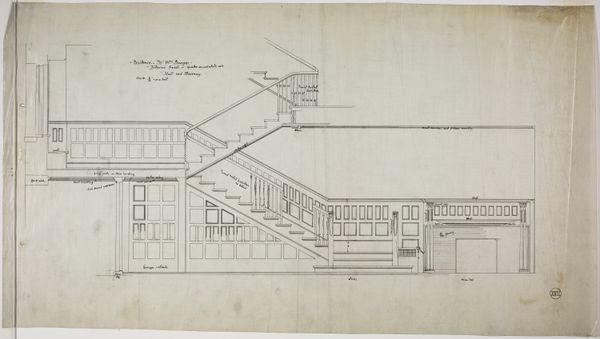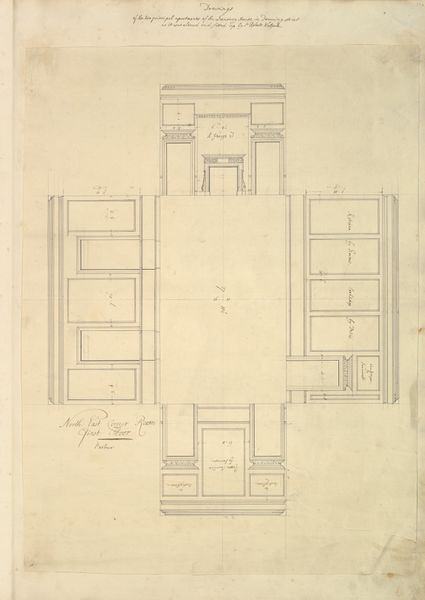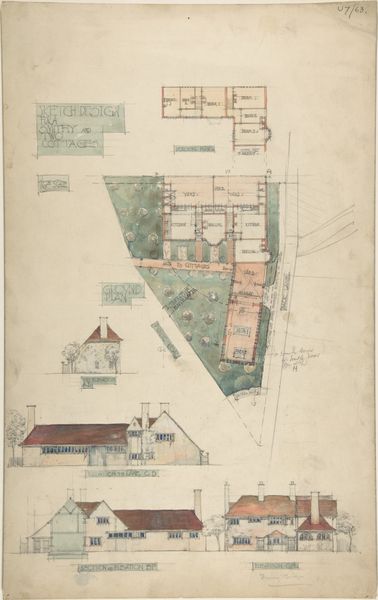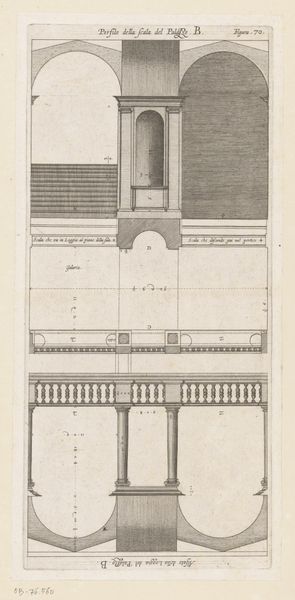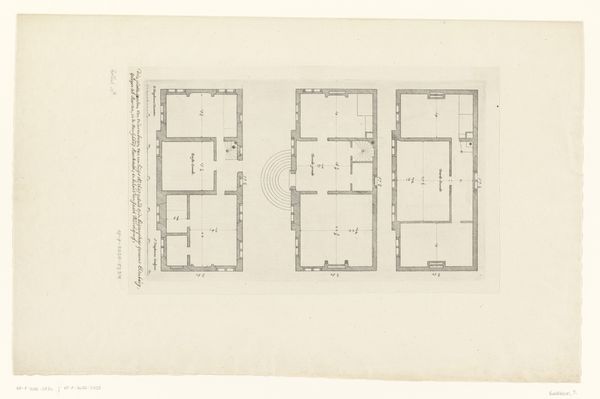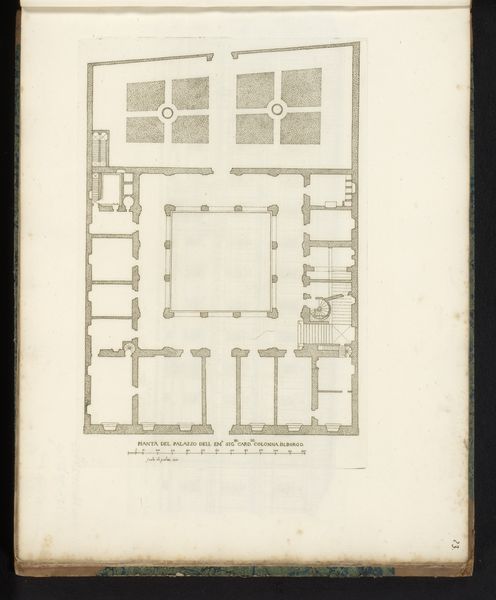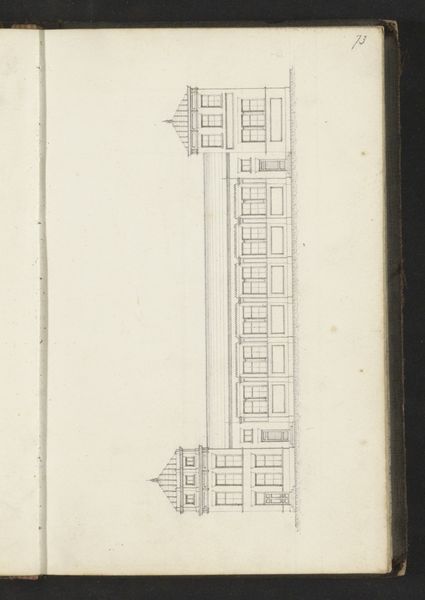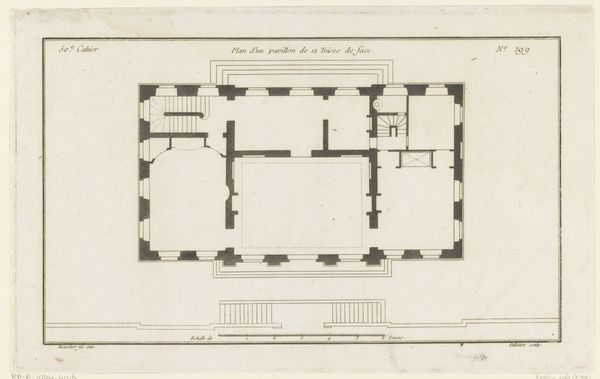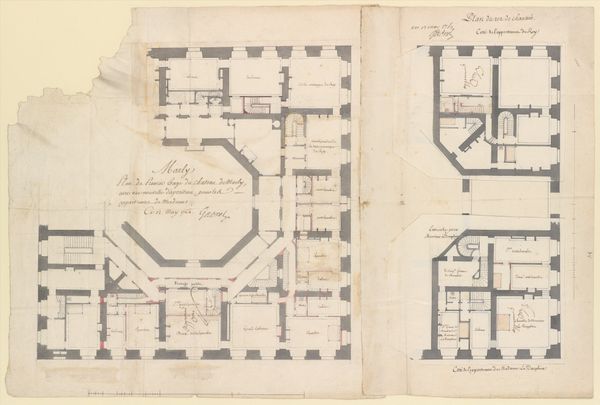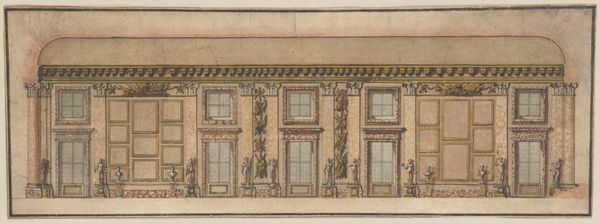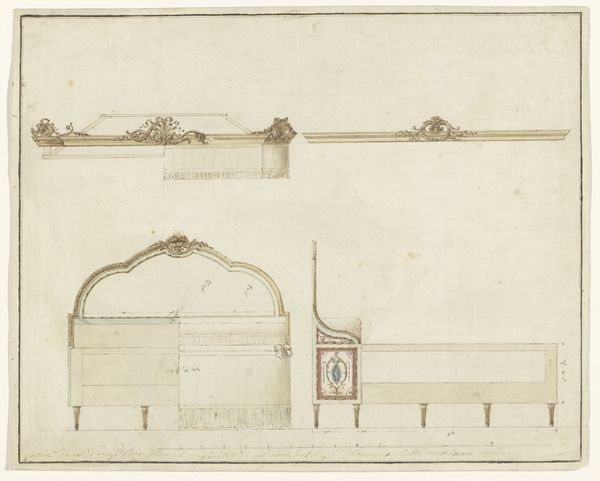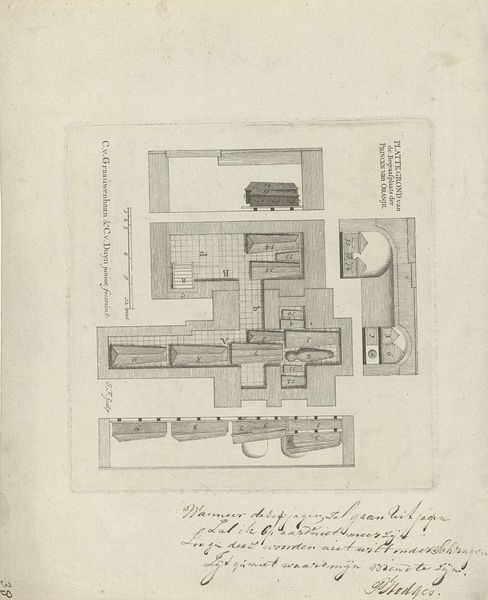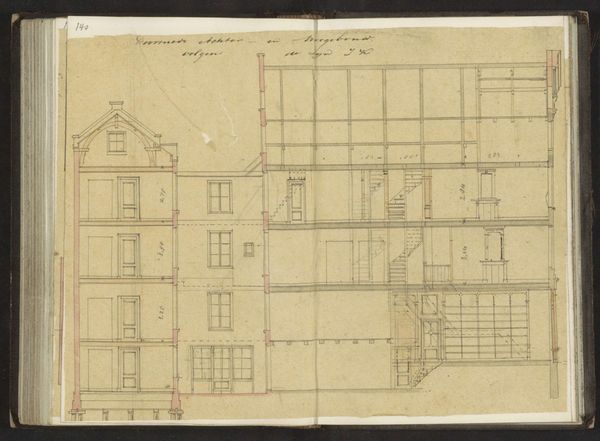
Snitopstalt og plan af et tehus i Sorgenfri park 1743 - 1809
0:00
0:00
drawing, watercolor, architecture
#
drawing
#
water colours
#
landscape
#
watercolor
#
watercolor
#
architecture
Dimensions: 297 mm (height) x 198 mm (width) (bladmaal)
Curator: Welcome! We’re looking at “Snitopstalt og plan af et tehus i Sorgenfri park,” a drawing of a teahouse project from sometime between 1743 and 1809, created by Nicolai Abildgaard. It's currently held at the SMK, Statens Museum for Kunst. Editor: It’s quite unassuming, isn’t it? Very linear and plain. The colour palette is so limited - beige, browns, greys. There's a sense of functionality winning out over ornate detail. Curator: Abildgaard was deeply invested in Neoclassical ideals and believed in architecture's potential to shape society, both ethically and aesthetically. The symmetry evokes balance and reason, central to enlightened thought. But there is a distinct visual austerity at play too, perhaps mirroring then-contemporary notions of virtuous restraint and the social functions of leisure. Editor: What interests me most is how the means dictate the artistic ends here. The drawings were rendered in watercolour and ink – practical media for architectural renderings and sketches. No doubt this tea house was intended as a built, usable object rather than purely symbolic artwork, however it never came to pass. The texture reminds me of a building permit. Curator: True. Look at the choices! Abildgaard presents elevations, plans, sections, all laid bare, emphasizing proportion and spatial relationships. Perhaps the unexecuted nature allows the teahouse to exist almost as an allegory— a symbolic space as much as a practical one. Tea itself can symbolize cultural rituals and contemplation, of course. It all comes together so neatly. Editor: Indeed, but I still sense something unfulfilled, or perhaps never intended. These drawings serve to delineate spaces for potential future gatherings that didn't occur, suggesting a ghostly residue of intended labor and consumption. It seems less to invite us into an intimate ritual and more to ask: What labour was, or was not, produced here? Curator: A very materialist approach. It shifts our reading to broader social narratives and possibilities... Editor: And absences, and non-beginnings! Curator: Precisely, providing us with unique social and art historical viewpoints on late eighteenth-century life, luxury, and society through the prism of what could have been. Editor: Food for thought—as any teahouse should aspire to offer.
Comments
No comments
Be the first to comment and join the conversation on the ultimate creative platform.
